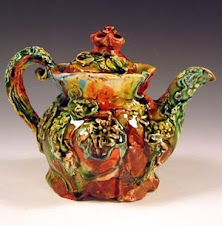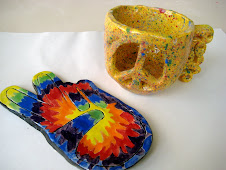Creating a Clay Stamp
1. Complete your designs for both the initial stamp and symbol stamp. Check them off with Miss Mahoney. You will put your initials on one side of your stamp, and the picture or symbol on the other.
2. Recycle and wedge a piece of clay about the size of an apple.
3. Break off a piece of this clay and begin shaping your stamp handle. Remember that the handles can be circular, square, triangular—whatever you like, but they must not be thickerthan 1”! Leave the ends wider for the images to be put onto.
4. Flatten the ends of your stamp handle so they are smooth and ready for the designs to be drawn on.
5. Trace your designs onto small pieces of tracing paper with a pencil. Then put the tracing paper pencil side down onto the flattened end. The design should appear backwards at this point. Trace over the design with your pencil or a pin tool and check to make sure the graphite has transferred onto the clay.
6. Use a pin tool to cut off the clay around your design to make the letters or picture pop up off the block, or use a carving tool to scoop out the clay inside your letters or picture to make them indent into the block.
7. Smooth out the entire stamp: this is best done when most of the carving is complete, and the stamp is leather hard. Scrape out any excess crumbs of clay, use small amounts of water to smooth the handle and surfaces of your stamp.
8. When both sides have been carved, put your name and block on the handle of the stamp (legibly), check it with Miss Mahoney, and put the stamp on the Greenware shelf to be fired!



































